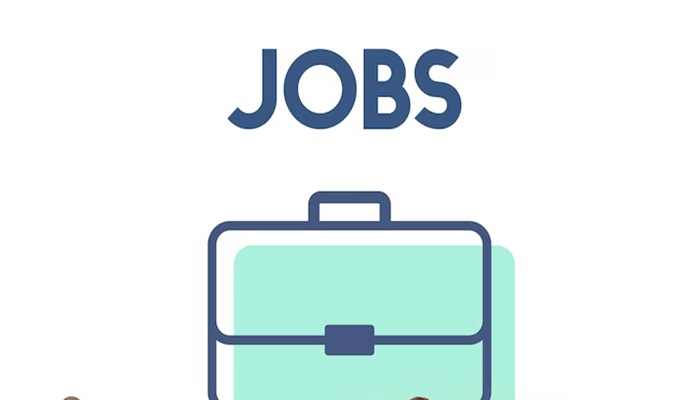At first, it felt like a brief pause, a chance to reset the career after her role was quietly dissolved in a corporate reshuffle. Preeti Verma took it as a three-month break. But three became seven. Then a year passed with a misaligned engagement in between. Despite two decades on her CV, she is unable to get back into the job market.
“You’re past the midpoint of your career, will you be a hustler? asked 43-year-old Bengaluru-based Verma, describing her ongoing job search. She’s trawling LinkedIn, tapping alumni ties, and scouring networks and WhatsApp groups for leads.
There is a missing middle in women’s corporate careers in India. This is the silent churn of midlife women edged out of the workforce, just as they hit their stride. The reasons aren’t mysterious: caregiving breaks, age bias, stalled growth, and workplaces that still operate on a template built for an uninterrupted, linear, male-coded careers. Inclusivity is a buzzword at India Inc, but mid-career women are untouched by it. And many are sacrificing their careers for the lack of choice the corporate structure places on their table. Years of grind that should lead to promotions are being bartered for personal space. In glorifying relentless performance, burnout becomes the baseline. And while companies gain from hustle culture, employees are penalised for choosing humane pacing.
This reporter spoke with over 30 women across sectors such as information technology, banking and finance, automobile, insurance, and recruitment. Almost all of them pointed out how their careers had been shaped by what many now call the five Ms: menstruation, marriage, mobility, motherhood and menopause.
Verma is no outlier. An MBA in Human Resources from Narsee Monjee, one of India’s premier management schools, she climbed the corporate ladder working at giants such as GECIS, now Genpact. She represents exactly the kind of mid-career talent companies claim to value. And yet her struggle betrays this assumption.
Ageism begins to surface much earlier than expected. For women, it often starts in their mid-40s, as highlighted by the Randstad India Ageism Report 2024. For men, it typically begins to surface in their mid-50s.
At entry level, women make up 46 per cent of the workforce in India. At the C-suite level, it’s just 19 per cent. That means for every 10 women who start, fewer than two make it to the top, while eight out of 10 men do, according to TeamLease’s 2025 study, Gender Parity: Shaping Workforce Equity.
Women in their 40s are often at the peak of their careers, in leadership or specialist roles, and replacing them can cost companies up to twice their annual salary. Their exit drains decades of institutional knowledge and mentorship, hollows out the leadership pipeline. On a macroeconomic scale, estimates suggest that bridging the gender employment gap might increase India’s GDP by nearly a third by 2025, translating to approximately $3.3 trillion.
Pushing them out
‘She wanted more time with family’; ‘Greater flexibility’—That’s the official story often wheeled out when women step back from full-time work. But beneath the polite euphemisms and tidy resignations lies another version: a story of exclusionary work culture.
At 46, a woman with nearly two decades of experience began to sense the quiet narrowing of her career. “I had done it for so long that it no longer challenged me…something I could do with my eyes closed,” she said.
Since early 2022, she had been leading the global content strategy at a business process firm. The hunger for growth gnawed at the edges of her professional identity. Unable to find a role that mirrored her ambition, she stepped away.
When she raised the idea of a role shift, something more strategic, she was met with polite nods and long silences from the management.
“They said they’d try to find me something, but nothing ever moved. For months,” she recalled and then she quit.
In Avtar’s January 2025 survey on gender diversity in the C-suite, 48 per cent of female respondents cited organisational culture as a significant barrier to advancement. Another 44 per cent flagged gender bias in hiring and promotions.
“Nobody takes you seriously because they don’t understand the depth of your frustration. I didn’t want to just clock in and out,” she said. “I wanted to build something that mattered,” she said.
On paper, her exit looked voluntary. But the truth ran deeper: she was pushed out of the system that lacked the framework to support her continued ascent.
The gap between male and female leadership yawns widest in the middle, just when women should be stepping into their prime. Especially in IT services, Banking, Financial Services, and Insurance, and core engineering, where female representation plummets from entry to leadership roles, according to TeamLease’s 2025 report. Even in relatively balanced spaces like Global Capability Centres, the leadership ladder narrows sharply. The attrition is steepest in services, where women in support roles are routinely sidelined from succession planning.
“Sales-oriented companies demand high availability and intensity, making them less forgiving toward women seeking flexibility,” said Yogesh Bisht, a senior human resource executive at a venture capital firm.
Saundarya Rajesh, founder-president of Avtar Group agreed. Assumptions that women would be less committed because of care-giving responsibilities, excluding them from important projects, key decisions taken in informal settings among men are major barriers for women to rise to the top.
“By midlife, women are squeezed from all sides, supporting ageing parents and adolescent children, facing bias, pay gaps, microaggressions, and the physical toll of menopause,” said Rajesh, adding that “the ladder to leadership was built for men. If we want women to climb it, we need to rebuild the rungs.”
Now, with AI threatening lower-skilled roles that largely employ women, the pressures are only intensifying.
The triple bind
Claudia Goldin, the Nobel-winning economist, coined the term “greedy work” for roles where pay grows with constant availability. These jobs are designed for someone who can work without interruption, who doesn’t need to negotiate with a child’s school schedule, an ageing parent’s doctor visits, or a body that’s suddenly no longer predictable.
This “greedy work” model stands in stark contradiction to most women’s reality.
If an organisation expects women to prioritise work over family, that’s a red flag, at least two working women said.
Twelve years ago, Aarthi Sivaramakrishnan, a former HR professional who left her corporate role to work independently stepped away from full-time work, partly to be present for her daughter, and partly to pace herself and pursue projects she cared about.
“Most women, to accommodate caregiving or relocation, have taken up roles that don’t match their ambition or skills,” she said.
Smriti Lamech, a 46-year-old communications professional, echoes this. Just as barnacles slow a ship’s journey, caregiving responsibilities, while often invisible, can weigh down a woman’s career progression, especially when compounded by the physical and emotional toll of parenting and, later, perimenopause.
Both Sivaramakrishnan and Lamech have made deliberate adjustments to their careers to prioritise caregiving.
Dhaarini Srinivasan, a Global Sustainability lead at Vdart, recalling her previous work experience reflects on how many women opt out of climbing the corporate ladder because the traditional definition of growth often demands longer hours, greater visibility, and a constant hustle beyond the 9-to-5.
“To grow usually means taking on more responsibility, more pressure, less flexibility,” she said. “That model doesn’t work for everyone, especially not for women juggling multiple roles outside work.”
Goldin’s research reveals that greedy work isn’t a neutral framework; it’s a gatekeeper that systematically sidelines anyone unwilling or unable to sacrifice life for labour, entrenching both career stagnation and gender pay gaps.
Caregiving is not the only bind; prejudice also works against women.
Recalling her previous work experience, Srinivasan, shares a common but often unspoken bias in the workplace: men are promoted based on potential, while women are promoted based on proof.
“A male peer is given a stretch role with the confidence that ‘he’ll figure it out.’ But when a woman expresses interest in the same opportunity, the question is usually, “Has she done this before?” This double standard, she suggests, reinforces a culture where women must consistently overperform just to be seen as equal contenders.
Mohua Sengupta, a Global Capability Leader with over 29 years of experience navigating boardrooms, building teams, and breaking barriers, has seen this dynamic play out firsthand. “The culture and policies of organisations, if anything, support women more today. The bias, if any, is with specific individuals. Opportunities can come with an unspoken qualifier that my presence might help fulfill a diversity quota. I do not want to be a DEI hire,” she said firmly. “Hire me for my skills, not to tick a box.”
Sengupta has previously worked with Novratis, Mashreq Global Network, Accenture, Wipro, Royal Bank of Canada among others.
Sengupta’s experience in Bengaluru, India’s tech-forward, startup-driven south, mirrors what Arpana Kumar Ahuja faced up north. In Gurugram’s corporate corridors, Ahuja faced the same prejudices. When she left Shell after a senior leadership stint, she repeatedly ran into recruitment conversations where confident sexism masqueraded as structural decisions.
A CXO role she was being considered for was abruptly slotted under the CMO, because, as someone casually put it, “she’s a woman, so things have to be more structured.” At another company, she was told to “discuss relocation with your husband,” since “husbands often don’t support, and then roles fall through.” The subtext was clear: these workplaces hadn’t moved far from deeply gendered assumptions.
Outdated systems & new realities
At 51, Neha is navigating perimenopause in silence. The insomnia, sudden dips in energy, and persistent brain fog have made even routine tasks feel tedious.
“I’m scared I’ll get a hot flash during a client presentation. Can I talk to my manager about this without it affecting my career?” asks Neha, a tech professional based out of Pune.
“After decades in this field, everything that once came naturally now felt insurmountable,” she said. Despite her challenges, Neha kept them hidden. “I was terrified of speaking up. What if they doubted my ability to lead? What if my promotion slipped away?”
In an industry built on composure, she’s learned to hide the physical realities of midlife. “There’s no policy, no conversation, not even a quiet acknowledgement. We just have to cope in private,” she said, capturing how the absence of recognition breeds both silence and shame.
For Srinivasan, perimenopause has been equally challenging, but with one crucial difference: “I could only manage because I have flexibility,” she said.
She began her career at 21 as an executive of operations at IndiaBulls Securities Ltd in Chennai, but it’s only now, two decades in, that she’s confronting a new layer of challenge: her body wages quiet mutinies, unexplained weight gain, erratic blood pressure, heightened emotional volatility, and chronic fatigue—physiological changes that have profoundly reshaped her experience of work and self.
These bodily shifts have slowed Srinivasan’s usual pace, forcing her to recalibrate how she approaches deadlines and daily tasks. The sharp bursts of energy she once relied on to power through long meetings or complex projects have become unpredictable, often giving way to sudden exhaustion.
“Some days, I just need to pause and reset in ways I have never done before,” she confessed. Perimenopause, like midlife itself, has been a turning point.
“It’s a phase, and I’m still figuring it out. But I’m not hiding from it anymore.” She openly speaks about it with her female colleagues and keeps her boss (male) informed about her health. She currently works from the office two to three times a week, spending the rest of her days working remotely, a hybrid system exclusive to her in the team.
Yet despite decades of progress, the modern workplace still treats women’s bodies and caregiving roles as disruptions. “At senior level, women are still fewer and hence menopause is really not becoming a priority from a conversation perspective,” said Rituparna Chakraborty, an industry expert.
The architecture of the modern workplace was built for men with wives at home, wives who ironed their shirts and packed their hot tiffins. Forged in the factories of the Industrial Revolution and hardened in the postwar corporate boom, it assumed workers had no caregiving duties and no bodily interruptions. When women entered en masse in the 1960s and 1970s, they were grafted onto a system that had never accounted for their realities.
Sivaramakrishnan’s experience underscores the pervasive nature of these challenges.
To balance caregiving and work, she shifted to short-term projects and consultancy roles, ensuring her career stayed on course.
“There’s always the fear of being perceived as out of touch, of needing to justify your priorities,” she said.
But beneath this fear lies a deeper issue: the assumption across workplaces that caregiving, often seen as a woman’s responsibility, is a professional liability rather than a legitimate break.
Vandita, co-founder of The One Future Collective, an intersectional advocacy group, based out of Mumbai, highlights the absence of conversation around career pivots and pauses, especially those driven by caregiving responsibilities.
Returning to full-time work is almost always a compromise. Employers question whether a woman who’s been on a break can deliver.
“Women re-entering often pick roles far below their skill level, just to get back in. They lose years trying to climb up again. They’re underpaid and undervalued despite having the experience. Had I not continued working on projects, no consulting work would have come my way. In this industry, you’re only considered an expert if you stay in the game,” said Sivaramakrishnan.
The message from the ecosystem is clear: take a break and pay the price.
“Women who request flexibility are often sidelined from leadership tracks, even if they’re high-performing. The assumption is that they can’t fully commit,” added Bisht from the VC firm.
Even breaks taken for wellness are framed as a lack of drive.
“Despite my experience, the hiring ecosystem views career breaks as gaps rather than growth. This makes re-entry unexpectedly difficult. Even when the break is intentional for my mental well-being, society’s mindset is such that they do not take the break very positively,” said Verma
But even for those who stay the course, the game isn’t played on merit alone.
As women advance in their careers, the currency shifts from competence to visibility. And that’s where the cracks deepen.
Professional growth, especially in midlife, is often lubricated by informal networks, weekend golf games, late-night drinks, industry mixers. Access to these is anything but equal.
“But it is not everybody’s cup of tea. Like for me the priority was attending to family and chores. Unfortunately, there was no time left for me to network,” said Verma, regrettably.
Instead of rushing back, Verma is taking it slow, she is learning to play sports like Pickleball and badminton, and more importantly, intentionally focusing on her own mental well-being.
By mid-career, advancement depends as much on who knows your story as on your track record. “It’s not just delivery anymore,” said Ahuja. “It’s about narrative-building and strategic exposure, and that’s where the gender gap exists.”
After almost a year’s break to travel and recharge, Aparna returned to the corporate world as Executive vice president of Corporate Brand & Communications at Jindal Steel & Power Ltd.
With much of the corporate conversation around gender equity focusing on recruitment or supporting young mothers, midlife women remain largely invisible in these frameworks.
Gayatri Das Sharma, founder of Timshel, an executive leadership consulting firm, pointed out that these interventions often fall short of addressing the lived experiences of women beyond 40.
“There are no flexible policies for women after 40 or 50. Because the assumption is, ‘You’re in senior leadership now, your kids are older—why do you need flexibility?’ It’s a narrow, reductive lens that overlooks the specific challenges of this life stage: perimenopause, elder care, and the quiet recalibration of purpose.”
This mid to late career conundrum thousands of women face at workplaces, at times also takes a hostile turn toward the end of their professional lives. Governed by traditional notions of age and narrow visioned productivity charts, organisations start easing them out.
“Even if women want to stay on after 55, retirement ages don’t support that. Fifty to sixty is when careers start tapering off. And that’s unfortunate, because people at that age actually have more time and experience. Your ambitions are more tempered, your insecurities settled. It’s a beautiful age—if organisations could tap into it intentionally,” said Sharma.
From the organisational standpoint, however, the calculus is different—and often unapologetically performance-driven.
Promotions are often linked to how available an employee is, not just their output. Organizations may value loyalty and retain older women, but their growth trajectory is often stunted compared to peers, said Bisht from the VC firm.
“You have to take responsibility for your performance in spite of the medical, hormonal, physical changes you’re undergoing,” said Chakraborty. Empathy, she said, doesn’t override outcomes. “Expecting that the organisation shall now somehow pause everything and be considerate—maybe in future generations when the numbers go up. Not now.”
Redefining the ladder
Retirement is finally starting to find language and structure in Indian boardrooms. When Shanthi Naresh retired after 35 years at Mercer India in 2023, she didn’t exit the workforce completely, she transitioned into an advisory role. “We worked out an arrangement that works for both of us,” she said. Retirement, it seems, is beginning to find language and structure in boardrooms.
But while retirement is gaining legitimacy, menopause still hides under tokenism and stigma.
“It’s mostly event-based awareness—oh, it’s Women’s Day, let’s talk about menopause,” said Choudhury. Real support, she argued, would mirror the thoughtful accommodations made for returning mothers.
“Menopause isn’t like maternity—there’s no fixed nine months,” said Lamech. “Some women suffer for ten years. Others just need a year or two.”
That variability makes framing all the more critical. Unlike maternity, which has a socially accepted script and timeline, menopause exists in a grey zone different for every woman, often invisible, and still whispered about. But policies that acknowledge this spectrum don’t exist.
“You don’t have to call it menopause leave. Call it ‘wellness leave’, a more inclusive, acceptable term,” said Amruta Chiudhary, founder of DEI consultancy Breath Being. The reframe matters because many women avoid availing such benefits due to fear of judgement.
But policy alone isn’t progress. “We think period policy equals leave. But it shouldn’t only be about leave. And if we bring in a menopause policy now, it’ll be narrow and uninformed, because it won’t be shaped by real voices,” said Arundati, co-founder Menstrual Health Action for Impact.
Without deeper cultural shifts training, vocabulary, and safe spaces to speak policies risk being performative.
Even small design cues can send powerful messages. “A chair in the washroom it’s a small thing, but it makes a big difference,” said Radhika Modi, gender, sexual and health rights researcher.
Carina Kohli, founder and CEO at Humm Care, a health-tech platform supporting employee well-being, explained how companies can design for privacy and dignity.
“You don’t have to notify your employer if you’re not comfortable to share yet. Programs are rolled out to be anonymous and confidential,” she said. “Most people may not want to disclose what they’re going through until they’re ready or ever. And that should be respected.”
Another overlooked lever is male allyship. Nearly 70 per cent of Avtar-Seramount’s ‘Best Companies for Women in India’ have structured allyship programmes. Systemic shifts like bias training, fostering psychological safety, normalising failure, and encouraging vulnerability can change the texture of the workplace.
“At our organisation (a multinational consulting firm) we recognize that if we want gender equity to last beyond entry-level, three things must become non-negotiable: First, flexibility must be a universal policy, not an exception. Performance evaluations based on outcomes and not recent visibility. Third, quotas can play a helpful role for each role and position. When women see others leading in their 40s, it paves the way for more to follow,” said a senior human resource executive with over 10 years of experience with both multinationals and startups, on condition of anonymity.
Organisations don’t need massive budgets to signal care. Story swap sessions, leaves for parents, during their kids’ board exams, no-meeting days, or using the round-robin method in meetings can make workplaces more inclusive.
“What we’re doing right now isn’t written in stone,” said Lamech. “There’s room to restructure careers to evolve them as we evolve.”




















